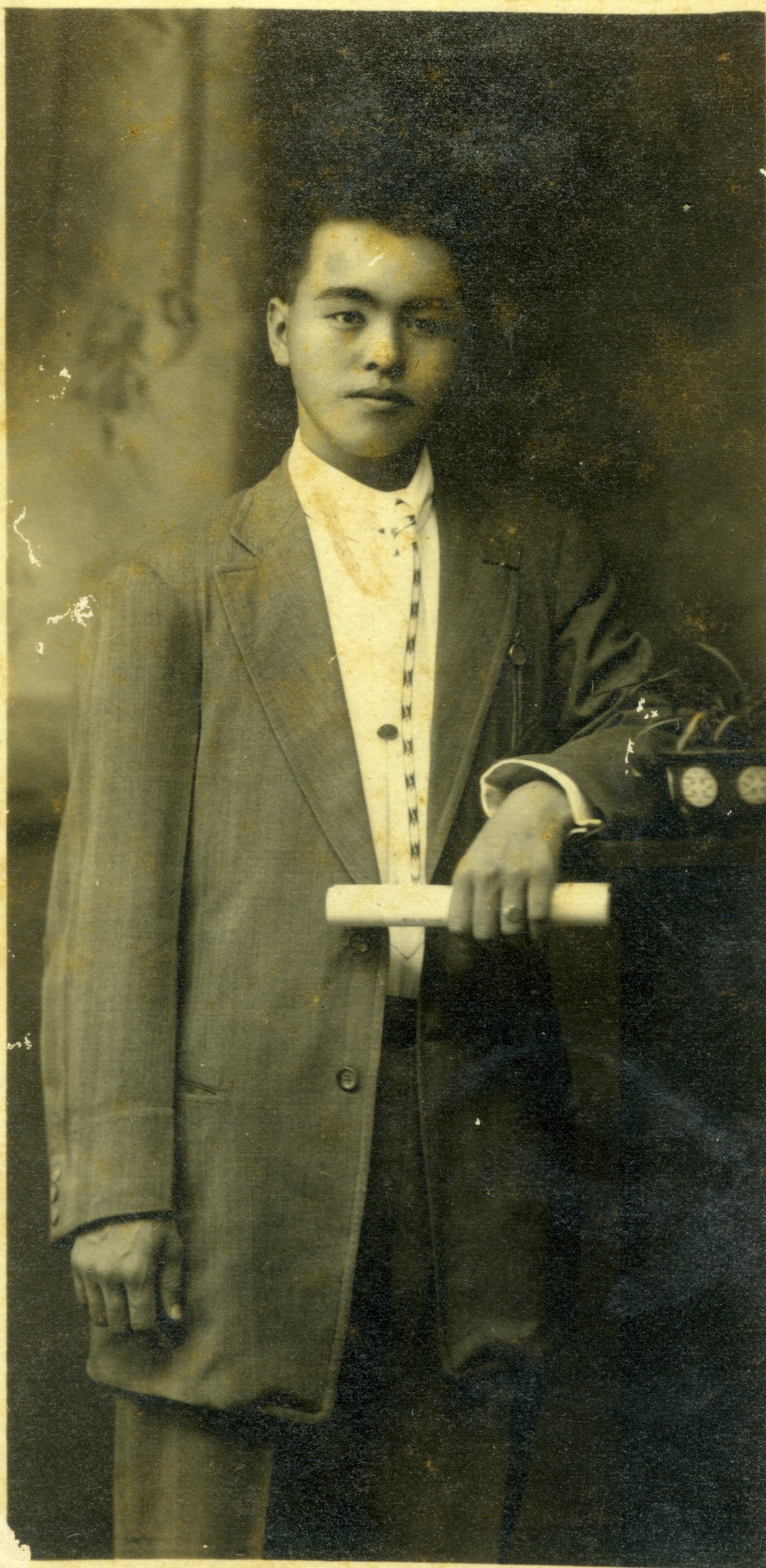The Kumaichi Hiraoka Postcard Collection was donated by his granddaughter, Nancy R. Hiraoka, in 2017 to the Japan Collection of the UHM Asia Collection Department. It consists of over 1,000 postcards that were created before 1945. This project digitized over 800 postcards and envelopes, which were all produced in Japan.
Kumaichi Hiraoka, known as “Oka'' by his close friends, was born in Yamaguchi-prefecture in Japan. He came to Hawaii at the age of 16, and worked for two years on Waialua plantation. He worked as a taxi driver, then as a private chauffeur for the George Beckley family, Walter McFarland (Hawaii Tuna Packers); Robert W. Shingle (Walter House Travel Co., Territorial Senator) then became the chauffeur for Mrs. Charles M. Cooke. He eventually got a position at the Honolulu Academy of Art (presently called the Honolulu Museum of Art) as the first male employee. In 1932, he became a Christian. Kumaichi retired from the Museum in 1956, after 30 years of dedicated services. He traveled throughout Japan in 1934, and then in 1961 and 1968 after his retirement.

Kumaichi Hiraoka, October 1913
See also related sites:
William T Hiraoka Papers
Goichi Nakamoto Family Archival Collection
Permission
No permission is needed if the images will be used for non-commercial educational purposes, such as class lectures, students' presentations, and academic conference presentations. Please credit the images with the sentence: "From the Kumaichi Hiraoka Postcard Collection, courtesy of the UHM Library Asia Collection."
When the images will be used in books, newspapers, documentaries, films, or any other forms of media, the users must obtain permission by writing the UHM Library Asia Collection. In the request, please explain the topic, image reference number, and the type of media/print.
Digitization Procedures
Project Leader: Tokiko Y. Bazzell, Japan Studies Librarian
Project Members: Madoka Nagado, and Nanae Sajiki (student assistants)
Advisors: Sadie Rosen (Metadata) and Daniel Ishimitsu (OMEKA)
Scanner: Epson DS-50000 flatbed scanner
Scanning specs: 400-600 dpi, 24-48 color bits, TIFF for preservation, TIFF images were converted to JPEG for this site. No manipulation of original photo images.
Metadata: Dublin Core standard, subjects were created in-house specific for the postcards.
Integrity: The year each postcard was created was estimated based on the postcard address side convention. When a date is not determined, a blank space is left:
| No divided | c. 1900-1906 |
| 1/3 divided line | c. 1907-1917 |
| 1/2 divided line | c. 1918-1932 |
| 1/2 divided line with the text 郵便はがき read from right to left | c. 1933-1944 |
| 1/2 divided line with the text 郵便はがき read from left to right | c. 1946- |
The postcards were donated in a box in no particular order. After digitization, each postcard is kept housed in an acid free archival envelop.
All the printed descriptions as well as correspondences were transcribed, however, the unidentified word(s) are presented by “x”.
Titles: Titles are provided from the postcards’ descriptions. When no titles are provided, a descriptive title is created.
Disclaimer: Some postcards produced by temples in early 1900s bear the Japanese word, “複製不許” meaning “No reproduction.” However, after consultation with scholars in Japan, these postcards were included because of the length of time that has passed since initial publication.